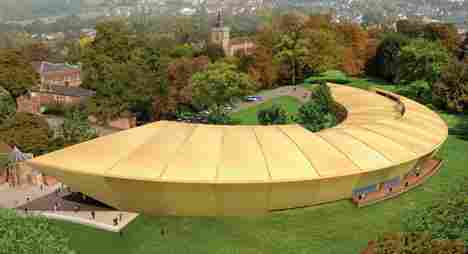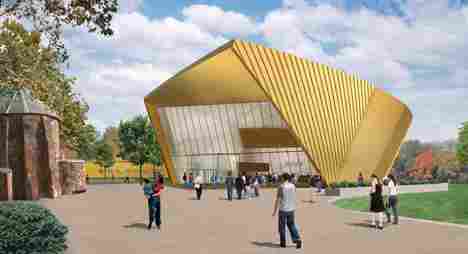From ancient times people from countries around the world have used long, thin materials of all kinds to create surfaces and three-dimensional forms through the process of weaving. This special technique enables the weaver to freely shape the form of their creation to fit its function, and depending on how it is done also makes it possible to create patterns. This process also creates a mysteriously calm, free space. Keeping these thoughts in mind, I decided that I wanted to create a shop based on the process of weaving. The shop I finally came up with is like the treasure-filled basked of a little girl.
Designer: Momoko Kashima
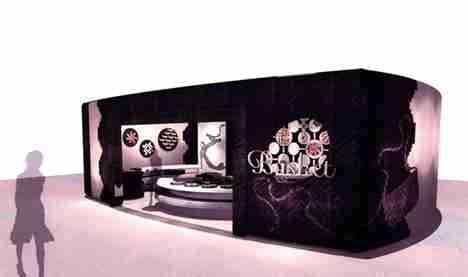
City in a Skyscraper
Launchspire is a radical re-interpretation not just of modern architecture, but of the airport and aviation in general. An electromagnetic vertical accelerator, using technological principles developed at CERN’s LHC provides a method for commercial aircraft to be accelerated to cruising speed from a ground based infrastructure. The super-tall structural solution would not only be a launch space for air transportation, but a vertical colony of commercial, residential & green spaces- essentially a helical version of the classic urban grid.
The super-tall design proposes a new methodology of “spiral tube” structure that ensures a habitable floor plate depth and simple pedestrian movement through the structure, while providing an overall cross-sectional width to overcome stability issues. This structural solution is born out of a desire to reinvigorate the “core and floor plate” model of high-rise buildings. By creating a street of privately owned plots of habitation, the development and evolution of the tower inhabitation becomes organic and specifically tailored to provide for the people that live within the tower. The use of plots would be governed by a democratic planning system to ensure the building serves its occupants well. Schools, hospitals, commercial and residential uses would be interspersed throughout the tower with approximately one third of all plots to be public green spaces, nature reserves and farm land. This and its focus on transportation effectively make the building a confluence of road, rail, air and space transportation… a contemporary settlement built around the move of people.
Designers: Henry Smith, Adam Woodward, Paul Attkins
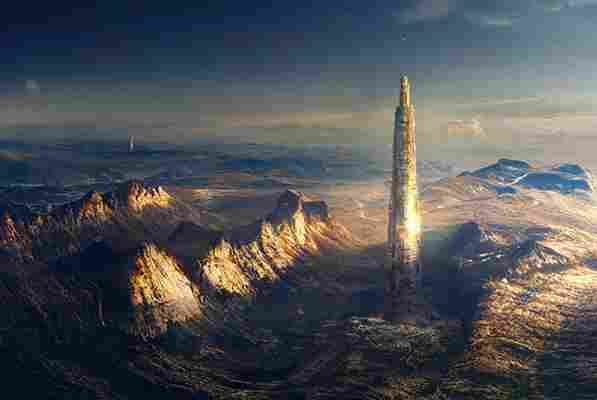
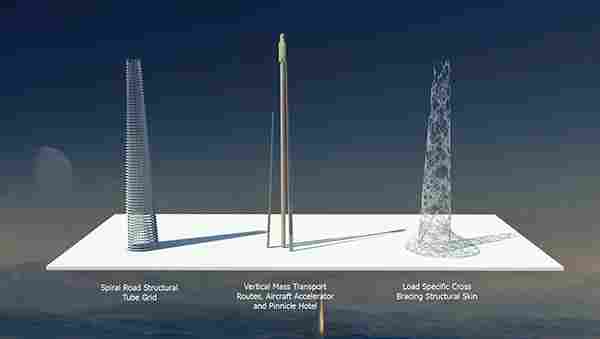
Colchester Visual Arts Facility by Rafael Vinoly
A new type of social building for cultural activities will be erected in Colchester: firstsite:newsite will have a significant artistic, architectural and social impact, presenting new work in new ways to capture the imagination of artists and audiences alike. To be located within the context of Roman ruins, the building will relate to the historic assets of Colchester, while its crescent shape will assist in the utilization of the site’s full potential and the employment of natural daylighting, ventilation and resources.
The design incorporates a permeable ground level with multiple entrances and an exterior public ramp, thus incorporating the exterior program with the building and promoting activity and use by all. Thus, the building sits lightly on the land to allow archaeological exploration beneath, and its base includes amenities such as a caf and gift shop. The area north of the building is an actively programmed public art space, while the southern zone is a landscaped space between the building and the historic Roman Wall. Local discoveries will be exhibited in indoor and outdoor public spaces.
The gallery level is defined by a varied materials palette that includes exposed timber, concrete and architectural woodwork. The typical white box is turned inside out through the incorporation of natural light and sweeping views of the park into the program. In addition, interaction between visitors, artists-in-residence and students is promoted through the flexible design of the spaces adjacent to the galleries, which can be opened to the galleries, and can encompass education, artist residencies and presentation. Exhibition space will be dedicated to the presentation of local, national and international artists, and the University of Essex collection of Latin American art. Furthermore, conference and administration facilities will be included in the program, and will also enjoy dramatic views of the landscape.
Architect: Rafael Vinoly
